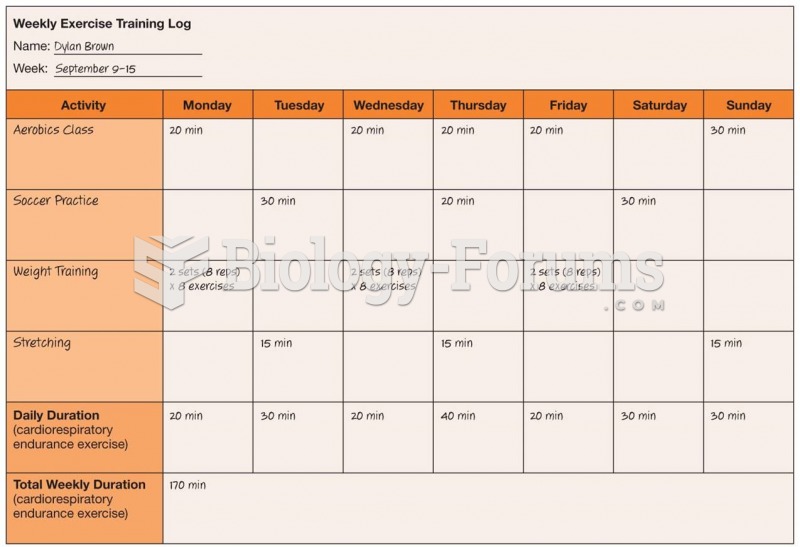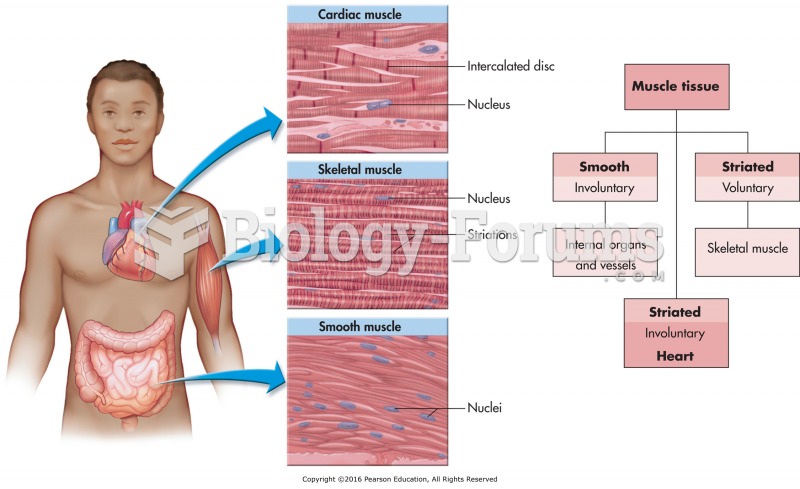Answer to Question 1
No. Accumulation of lactate was long blamed for a type of muscle fatigue, but recent thought disputes this idea. During intense activity, anaerobic breakdown of glucose produces lactate. Muscles release lactate formed during exercise into the blood, and it travels to the liver. There, liver enzymes convert the lactate back into glucose. Glucose can then return to the muscles to fuel additional activity. At low intensities, lactate is readily cleared from the blood by the liver, but at higher intensities, lactate accumulates. When the rate of lactate production exceeds the rate of clearance, intense activity can be maintained for only one to three minutes (as in a 400- or 800-meter race or a boxing match). It is true that muscles produce lactate during a type of fatigue, but the lactate does not cause the fatigue.
Answer to Question 2
Science indicates that the pregame meal should include plenty of fluids and be easy to digest. It should provide between 300 and 800 kcalories, primarily from carbohydrate-rich foods that are familiar to and well-tolerated by the athlete. The meal should end three to four hours before competition to allow time for the stomach to empty before exertion.
Breads, potatoes, pasta, and fruit juicescarbohydrate-rich foods low in fat, protein, and fiberform the basis of the pregame meal. Bulky, fiber-rich foods such as raw vegetables and high-fiber cereals, although usually desirable, are best avoided just before competition. Such foods can cause stomach discomfort during performance.
Drinks or sport bars are mixtures of carbohydrate, protein (usually amino acids), fat, some fiber, and certain vitamins and minerals that may taste good and provide additional food energy for a game or for weight gain. They fall short of providing complete nutrition, however, because they lack many of the beneficial nutrients and phytochemicals that real food offers. These products may provide one advantage for active peoplethey are easy to eat in the hours before competition.
Liquid meals are easy to digest, and many such meals are commercially available. Alternatively, athletes can mix fat-free milk or juice, frozen fruits, and flavorings in a blender. For example, mixing fat-free milk or apple juice with a frozen banana and cinnamon or vanilla makes a tasty, high-carbohydrate, liquid pregame meal. Do not drop a raw egg in the blender because raw eggs often carry bacteria that cause food poisoning.
Answer to Question 3
A healthful diet is based on nutrient-dense foods - foods that supply adequate vitamins and minerals for the energy they provide. Active people need to eat both for nutrient adequacy and for energyand energy needs can be extremely high. A diet that is high in carbohydrate (60 to 70 percent of total kcalories), moderate in fat (20 to 35 percent), and adequate in protein (10 to 20 percent) ensures full glycogen and other nutrient stores. In addition to carbohydrate and some fat (and the energy they provide), physically active people need protein. Meats and milk products are rich protein sources, but recommending that active people emphasize these foods is narrow advice. As mentioned repeatedly, active people need diets rich in carbohydrate, and of course, meats have none to offer. Legumes, whole grains, and vegetables provide some protein with abundant carbohydrate.







